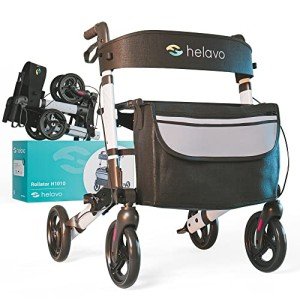The Importance of Elderly Walkers: Enhancing Mobility and Independence
As individuals age, their bodies undergo various changes that might affect their mobility. Conditions such as arthritis, osteoporosis, and other chronic conditions can make navigating the environment challenging for the elderly. Fortunately, assistive gadgets like walkers can considerably improve mobility, ensuring that seniors keep their independence and lifestyle. This post will look into the numerous kinds of walkers available, their advantages, and essential factors to consider when picking the right one.
Comprehending the Different Types of Walkers
A walker can supply the essential support for seniors fighting with mobility. Nevertheless, not all walkers are produced equivalent. Here's a comprehensive breakdown of the various kinds of walkers available.
| Kind of Walker | Description | Best For |
|---|---|---|
| Standard Walker | A lightweight frame with four legs supplying fundamental support. | People requiring assistance while walking. |
| Two-Wheeled Walker | A walker with 2 wheels at the front enabling much easier movement. | Users who require more mobile support for faster walking. |
| Four-Wheeled Walker | A rollator with four wheels, brakes, and a seat. | Active seniors who need more mobility and a location to rest. |
| Knee Walker | A specialized walker with a padded platform for resting the knee. | People recovering from foot or ankle injuries. |
| Folding Walker | A walker that can be collapsed for easy storage and transportation. | Seniors requiring benefit when taking a trip. |
Table 1: Types of Walkers
Benefits of Using a Walker
Walkers offer a wide variety of advantages for seniors, including:
- Enhanced Stability: Walkers give additional support to the user, assisting to promote confidence while walking.
- Improved Balance: With a walker, seniors can redistribute their weight, improving balance and reducing the threat of falls.
- Increased Independence: Users can move around their homes and communities more comfortably, allowing them to engage in social activities.
- Reduced Pain: Walkers can minimize the influence on joints and muscles, making movement less uncomfortable for conditions like arthritis.
- Flexible Usage: Walkers appropriate for various environments, whether inside, outdoors, or on unequal surfaces.
Table 2: Benefits of Using a Walker
Selecting the Right Walker
Picking the ideal walker is vital to maximizing mobility and guaranteeing convenience. Here are some considerations:
- Weight Capacity: Ensure that the walker can support the user's weight. Continuing of walkers have a defined weight limitation.
- Height Adjustment: Adjustable height features ensure that the walker is set to the proper level for the user's height, promoting excellent posture and convenience.
- Wheels vs. No Wheels: Depending on the user's abilities and environment, a walker with wheels may be more beneficial for motion, while a non-wheeled walker might offer more stability.
- Extra Features: Some walkers come with integrated seats, storage, or devices (like cup holders) that can enhance user experience.
Table 3: Considerations for Choosing a Walker
Maintenance of Walkers
Proper maintenance of walkers is vital for making sure safety and longevity. Here are some fundamental upkeep pointers:
- Regular Inspections: Check for fractures, rust, or loose screws and guarantee that the rubber suggestions on the legs are undamaged.
- Wheel Maintenance: Ensure that wheels move easily and are not stuck; oil them if necessary.
- Changes: Periodically inspect if the height and settings remain proper, adjusting them as necessary to preserve user convenience.
Table 4: Maintenance Tips for Walkers
Frequently Asked Questions About Elderly Walkers
1. What is the typical cost of an elderly walker?
The rates of walkers can range substantially based upon the type and features. Requirement walkers might cost between ₤ 50-₤ 100, while specialty walkers or rollators can vary from ₤ 100 to ₤ 300.
2. Are walkers covered by insurance?
Numerous insurance strategies, including Medicare, cover the cost of walkers, offered they are deemed clinically required. It's essential to consult your insurance coverage provider for specifics.
3. How do I understand when my liked one requires a walker?
Indications may include trouble walking independently, frequent falls or near-falls, and increased fatigue while performing daily activities. A healthcare professional can provide a comprehensive assessment.
4. Can walkers be used outside?
Yes, numerous walkers can be used both indoors and outdoors. If preparing to use a walker outdoors, think about a model with wheels or broader legs for stability on numerous terrains.
5. How long can a walker last?
With correct upkeep, an excellent quality walker can last for a number of years, though wear and tear will vary depending on use frequency and conditions.
Walkers are vital tools that can restore mobility and self-reliance for seniors while guaranteeing their safety. As individuals live longer and lead active lifestyles, investing in correct assistive gadgets like walkers is more vital than ever. Understanding the kinds of walkers available, their advantages, and how to pick the best one can empower users and their caretakers to make educated choices. Eventually, the ideal walker can result in better quality of life, enabling aging people to remain active participants in their neighborhoods.

